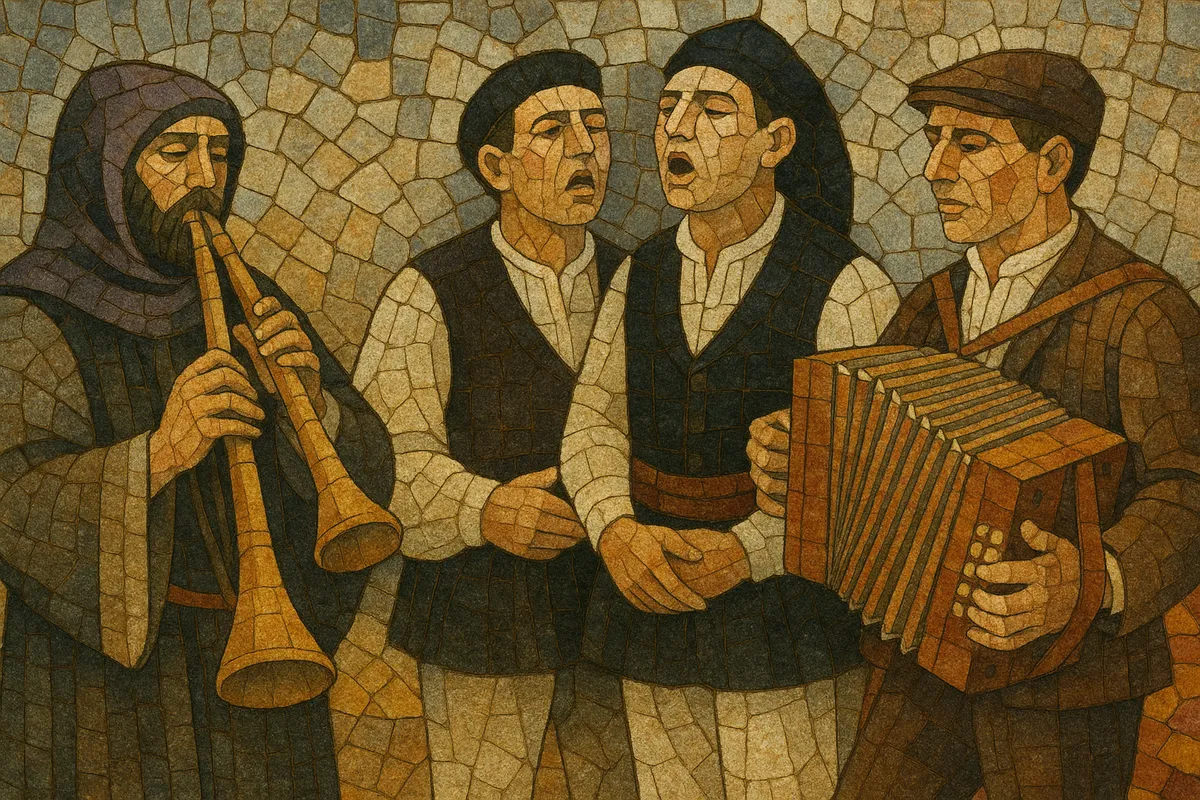Sardinian folk music is the traditional music of Sardinia (Italy), characterized by striking vocal polyphony, ancient reed-pipe instruments, and a living dance repertory.
Its best-known vocal form is cantu a tenore, a four-part, overtone-rich male polyphony featuring the parts bassu, contra, mesu 'oche, and 'oche (solo), now recognized by UNESCO as Intangible Cultural Heritage. Equally prominent are devotional and paraliturgical songs (gosos/cuncordu), improvised poetic forms (mutetu), lament songs (attitu), and the guitar-accompanied cantu a chitarra/chiterra.
Instrumentally, Sardinia is famed for the launeddas, an ancient triple-pipe cane instrument played with circular breathing, as well as the organetto (diatonic accordion) that drives social dances like ballu tundu, passu torrau, and su dillu. Melodies favor modal inflections (often Dorian, Aeolian, and Mixolydian), sustained drones, and heterophonic textures, while lyrics are predominantly in Sardinian varieties (Logudorese, Campidanese), Gallurese, Algherese Catalan, and Italian.
Sardinian folk music bears pre-Roman traits, with the launeddas (triple reed pipes) documented archaeologically and in early written sources. Oral traditions, work songs, and ritual repertoires formed the backbone of rural and pastoral life, transmitted across villages and seasons.
Through the medieval period, devotional song and chant blended with local practices, leaving a lasting imprint on paraliturgical repertoires (e.g., gosos/cuncordu). By the 18th–19th centuries, travelers, clerics, and antiquarians began noting the island’s distinctive polyphony and instruments, while local confraternities preserved religious singing.
Early ethnomusicologists and recordists in the early–mid 1900s documented cantu a tenore groups and launeddas virtuosi (e.g., Efisio Melis), helping stabilize styles and repertoires. After World War II, festivals, radio, and LPs reinforced regional identities, and the organetto became central to community dances. From the 1970s, artists like Maria Carta and Elena Ledda bridged tradition with contemporary audiences, spurring renewed interest.
Cantu a tenore’s UNESCO inscription (2005) elevated Sardinian vocal polyphony on the world stage. Ensembles such as Tenores di Bitti and Cuncordu e Tenore de Orosei toured internationally, while archival projects and local schools revitalized transmission to younger generations.
Today, Sardinian folk music thrives in festivals, religious calendars, and social gatherings. It coexists with cross-genre collaborations (jazz, world, and art music), yet remains rooted in village-specific styles, languages, and performance contexts that emphasize communal participation and oral learning.


